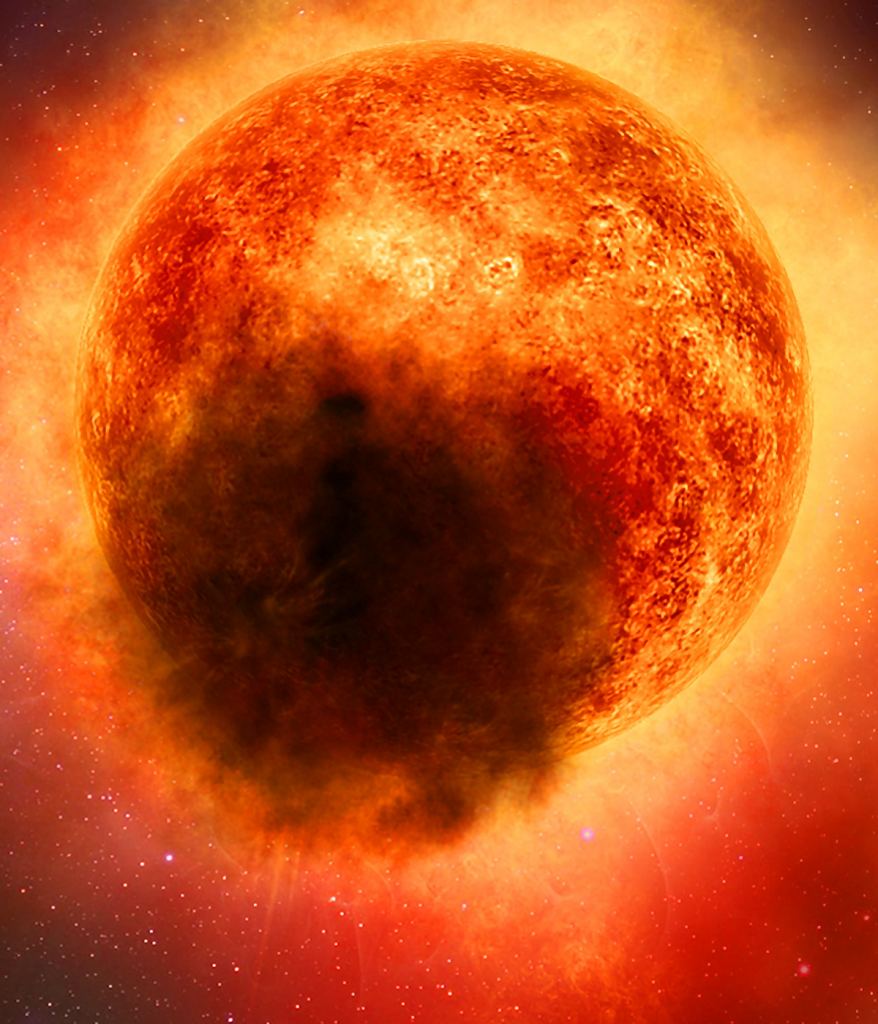Red supergiant stars are explosions waiting to happen. They are in the last stage of their life, red and swollen as they fuse heavier elements in a last effort to keep from collapsing. But eventually, gravity will win and the red supergiant core will collapse, triggering a supernova. We know it will happen, but until recently, we didn't know when.
The most famous red supergiant is Betelgeuse, the bright red star in the constellation Orion. It is about 550 light-years away and has a mass of about 18 Suns. It is the closest red supergiant to Earth, and when it eventually does explode it will briefly outshine the Moon. Of course, this has caused all manner of speculation about the star. Will it explode in our lifetime? Has it already exploded, and we're just waiting for the supernova light to reach us? And all astronomers have been able to say is probably not, but we don't really know. But a new study could give us an advance warning a few months before Betelgeuse does explode.
There are two general models for red supergiant supernovae. Both predict a red supergiant should dim significantly before exploding, on significantly different time scales. In the superwind model, a stellar wind is triggered by the ever-faster rate of fusion at a star's end of life. The outer layer of the star is driven off by this wind over several decades, creating a circumstellar layer of cool gas that causes the star to appear very dim. The rapid outburst model, on the other hand, predicts a final period of less than a year, where more than a tenth of a solar mass can be cast off. This would cause the star to dim by a factor of 100 within the last few months of its life.
In this study, the team looked at all the red supergiant supernovae cases where the star was observed before its explosion. Most supernovae are only observed after the explosion, so between 1999 and 2017 there are only a dozen cases of good pre-supernova observations. But in all of those cases, the brightness of the stars remained fairly consistent in the years leading up to the supernovae. This would rule out the superwind model and suggests that a red supergiant should dim significantly before exploding. In the case of Betelguese, we have seen the star dim as it cast off a cloud of gas, but not to the level that indicates an eminent explosion.
Unfortunately, we don't have enough red supergiant observations to have observed a rapid dimming before the bang, but that could change in the future as more long-term sky surveys come online. And who knows, given how well-studied Betelgeuse is, our red supergiant neighbor might be the first star to give us a supernova red alert.
Reference: Davies, Ben, et al. " Explosion Imminent: the appearance of Red Supergiants at the point of core-collapse." *Monthly Notices of the Royal Astronomical Society* 517.1 (2022): 1483–1490.
 Universe Today
Universe Today

